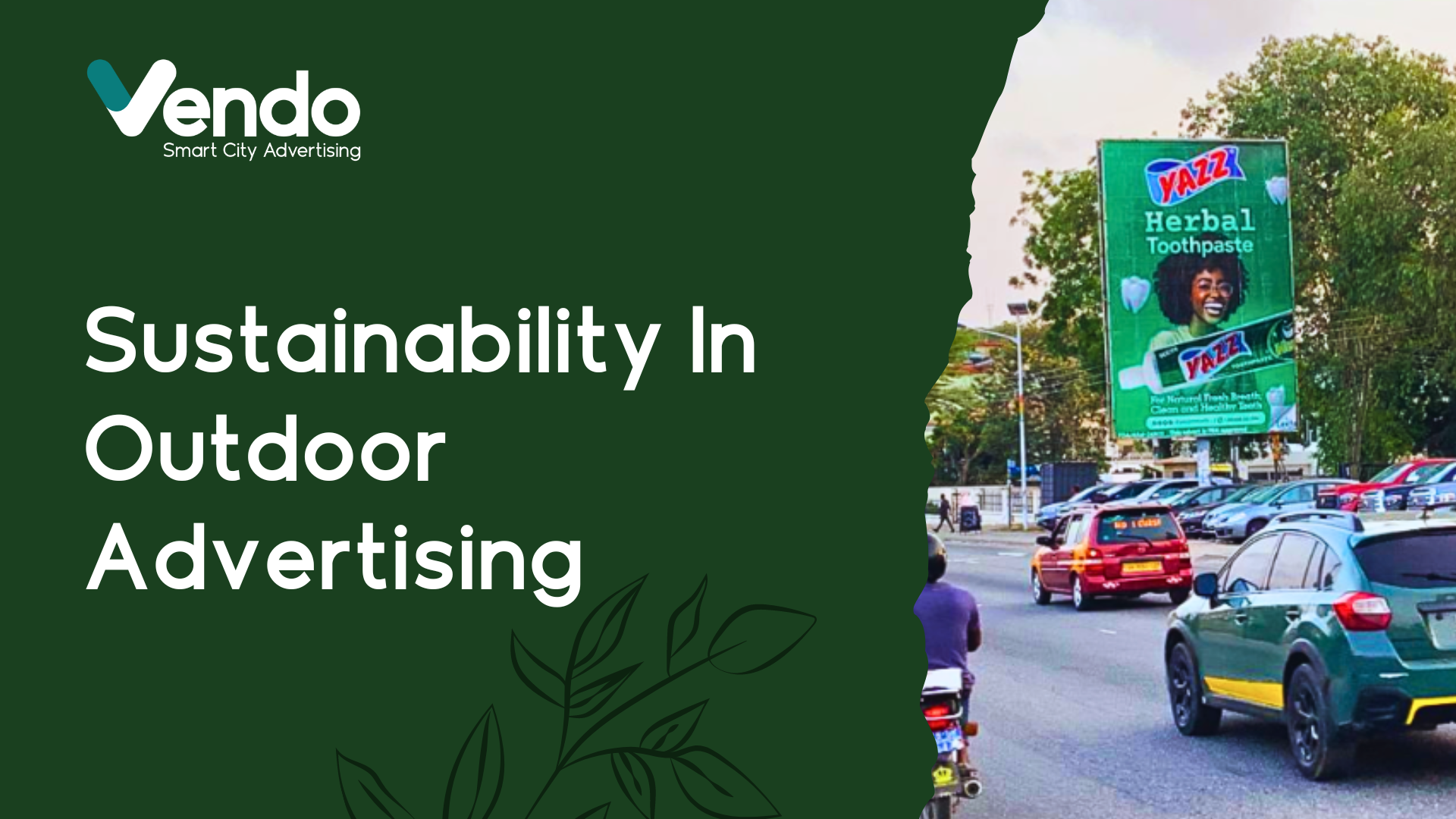
The outdoor advertising industry is embracing sustainability by adopting eco-friendly materials, energy-efficient billboards, and recyclable structures. This article explores how these practices, along with campaigns promoting social responsibility, are reducing environmental impact. Learn how outdoor advertising is evolving to meet the demands of a greener, more sustainable future.
The outdoor advertising industry has long been associated with large-scale visuals, often relying on materials and practices that contribute to environmental concerns. However, in recent years, the industry has begun to embrace sustainability, recognizing its responsibility to mitigate its environmental impact. From adopting eco-friendly materials to designing campaigns that promote social responsibility, outdoor advertising is evolving to meet the demands of a more environmentally conscious audience.
The Shift to Sustainable Materials
One of the most significant areas where outdoor advertising can become more sustainable is in the materials used to produce billboards and signage. Traditionally, vinyl—a petroleum-based material—has been the dominant choice due to its durability and weather resistance. However, vinyl is not biodegradable and can contribute to pollution if not disposed of responsibly.
To counter this, many companies are now opting for alternatives like eco-friendly, biodegradable materials such as PVC-free substrates. JCDecaux, one of the largest outdoor advertising firms in the world, has made substantial progress in this area. They have committed to reducing the environmental impact of their advertising assets by using more eco-friendly materials, such as recyclable polyethylene films for their posters and advertisements, replacing traditional vinyl.
In addition, water-based inks, which are less toxic than solvent-based inks, are being used to print billboards, reducing the release of harmful chemicals. A leading example of this is Clear Channel Outdoor, which has introduced water-based printing methods across various campaigns, ensuring that their ads have a lower environmental footprint.
Energy-Efficient Digital Billboards
Digital billboards, while effective in delivering dynamic advertising content, can consume significant amounts of energy. However, technological advancements are allowing for more energy-efficient solutions. Today, LED billboards with low power consumption are being adopted as replacements for older, more energy-intensive models.
An example is Times Square, New York, where the digital billboards are known for their high visibility. In recent years, many of these billboards have transitioned to using LED technology, which consumes less energy than traditional lighting systems. In the Philippines, for example, Coca-Cola, in partnership with the World Wildlife Fund, unveiled a solar-powered billboard made up of numerous Fukien tea plants, which can pull pollutants from the air, working as a natural filter. The lightweight potting mix contains organic fertilizers and industrial by-products, while the tree pots are made from recycled Coca-Cola drink bottles.
Furthermore, companies like Outfront Media are leveraging motion sensors on digital billboards to adjust brightness levels based on the time of day or weather conditions, further cutting down on energy use.
Reducing Waste through Recyclable and Reusable Structures
Sustainability in outdoor advertising isn’t just about materials and energy use; it also involves reducing waste through recycling and reusability. Modular billboard structures, for instance, are designed to be easily disassembled and repurposed for future campaigns. This approach reduces the need for new materials and lessens the environmental burden associated with constructing new billboards.
One standout example is Posterscope, a global outdoor media agency, which executed the “Quality Street” campaign for Nestlé UK in 2021 where they used green printing techniques for all 6 sheet paper posters using 100% recycled paper to reduce their impact on the environment as part of their commitment to reach net zero emissions by 2050
Sustainable Campaigns: Promoting Social Responsibility
In addition to adopting sustainable practices in their operations, outdoor advertisers are using their platforms to promote sustainability and eco-consciousness in the messages they deliver. Brands are increasingly aligning their campaigns with environmental and social causes, from promoting renewable energy to encouraging recycling. By using their reach to raise awareness, advertisers can help drive positive behavioral changes among consumers.
For instance, The Body Shop ran a bus shelter campaign in London using air-cleansing technology. Their bus shelters were coated with a special material designed to absorb pollutants from the surrounding environment, actively cleaning the air and removing harmful substances like nitrogen oxides from passengers as they waited for their rides.
Measurement and Accountability
The shift toward sustainability in outdoor advertising also involves holding companies accountable for their environmental impact. Industry standards and certifications, such as the ISO 14001 for environmental management, encourage companies to adopt practices that minimize waste, reduce energy consumption, and ensure responsible sourcing of materials.
JCDecaux has set up internal systems to measure and report their environmental impact, ensuring they stay on track with their carbon reduction goals. The company uses certain assessments to evaluate the environmental impact of their campaigns and track energy consumption, materials used, and waste generated.
Conclusion: A Future-Forward Approach to Advertising
Sustainability is no longer just a buzzword in the outdoor advertising industry; it’s becoming a foundational principle as companies recognize their responsibility to the environment. From utilizing eco-friendly materials and energy-efficient technologies to designing campaigns that promote social responsibility, the industry is evolving to meet the needs of a greener future. Examples from companies like JCDecaux, Clear Channel Outdoor, and Outfront Media demonstrate how these practices are not only reducing environmental impact but also making a lasting positive contribution to communities and the planet.
As these initiatives continue to grow and become the industry standard, outdoor advertising has the potential to not only reduce its environmental footprint but also play a crucial role in fostering a culture of sustainability among consumers.